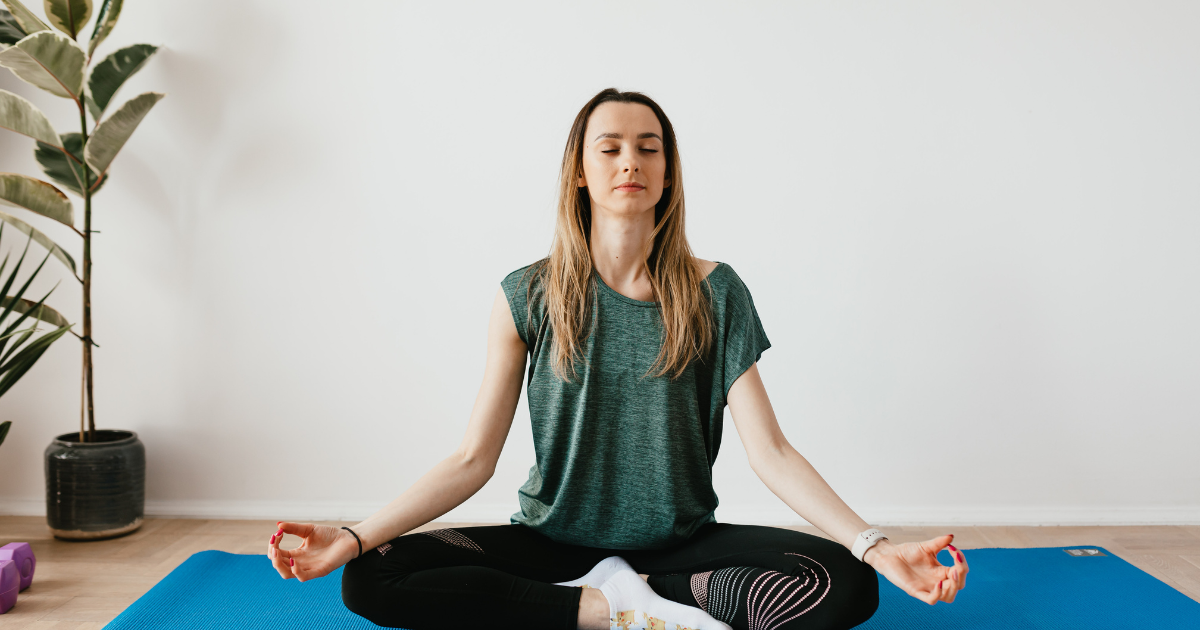Yoga: A Pelvic Health Solution
By: Estimated reading time: 5 minutes
By: Estimated reading time: 5 minutes

Introduction
The pelvic floor plays a variety of important roles in our bodies. Many factors influence the ability of the pelvic floor to fulfill these roles. Yoga can serve as a valuable adjunct in pelvic wellness and rehabilitation.
In this blog, Shelly Prosko, a physiotherapist, yoga therapist, and pioneer of PhysioYoga, outlines nine important roles of the pelvic floor. Will she be able to alter your views on how yoga can be used to enhance pelvic floor health?
Roles of the Pelvic Floor
The anatomy of the pelvic floor is described in my online course. The roles of the pelvic floor are outlined as follows:
I. Connects the Pelvis to the Sacrum:
The pelvic floor supports the connection between the pelvis and the sacrum. Muscles, fascia, and ligaments are all important in this connection.
II. Supports Pelvic Organs:
The pelvic floor plays a role in the support system of the organs situated in our pelvic cavity. These organs, including the vagina, cervix, and uterus in women, and the rectum, small bowel, bladder, and urethra in both men and women, are all supported by the pelvic floor.
Many other structures in the pelvic cavity help to support the pelvic organs. The extent of support depends on the pressure system, which is influenced by the way we breathe and move. Disruption in any one or more of these factors can contribute to a pelvic organ ‘falling’ down (i.e., ‘prolapse’) which can lead to problems. The good news is, there are practices we can do to help address this issue! I discuss this in length in my online course PhysioYoga and the Pelvic Floor.
III. Helps in Bowel and Bladder Function:
Bowel and urinary continence are defined by the ability to control the bowel and bladder. The pelvic floor is a part of overall bowel and bladder health. We must have the ability to voluntarily and involuntarily engage and relax the pelvic floor muscles to control the bowel and bladder, including stopping the flow when we need to and also relaxing enough to fully empty both the bowel and bladder.
IV. Supports Sexual and Reproductive Function:
The pelvic floor plays a role in reproductive function, such as in labour and delivery in women. Additionally, the pelvic floor plays a role in sexual health and function. Sometimes when pelvic floor issues, like too much tension or a non-relaxing pelvic floor, arise they can lead to pain and problems with sexual activities, including intercourse, masturbation or other activities involving the pelvic floor and genitals. In my online course, I also address this role of the pelvic floor and the biopsychosocial factors that may influence its ability to fulfill its role in these areas.
V. Acts as a Team Player in the Core Strategy System:
The pelvic floor is part of the core strategy system that helps to control and regulate intra-abdominal pressure and contributes to efficient movement. The amount of engagement of the pelvic floor depends on the demands of the task.
VI. Works in Timing with Breathing:
The pelvic floor and the respiratory diaphragm move together in a rhythm when we breathe. The direction of the movements is sometimes misunderstood; the pelvic floor and respiratory diaphragm both go down on inhalation and rise back upon exhalation. The amount of movement that happens depends on many factors.
Shelly Prosko of PhysioYoga demonstrates the extended child's pose to help us understand the movement of the pelvic floor with the breath cycle:
VII. Supports Hip Health and Function:
Learning about pelvic anatomy can help us understand the role that the pelvic floor plays in hip health and function. We can then use that information to inform our rehab practice or our health.
Dive deeper into pelvic anatomy to learn and enhance the connection to and awareness of the pelvic floor. Register for PhysioYoga and Pelvic Floor with Shelly Prosko.
VIII. Contributes to Our Balance:
The pelvic floor helps us with our balance reactions. A study done by Smith et al. (2008), found that a group of women that had pelvic floor dysfunction, as measured by incontinence, also had decreased balance ability when compared to a group of continent women without pelvic floor dysfunction. The poor balance and pelvic floor dysfunction were associated with an over-activated pelvic floor, which is relevant when we think of the pelvic floor as a part of our overall core strategy system, and how this coordinated system is important for movement and balance.
IX. Facilitates Voice Production:
The respiratory diaphragm and the structures of the vocal diaphragm work together to produce sound. On an exhalation, the respiratory diaphragm ascends, and the air is pushed out through the voice box. This allows the vocal cords to vibrate and produce sound.
The quality, volume, and projection of our voice can depend on our breathing system. Recall that the pelvic floor moves in timing with the respiratory diaphragm, and both can influence the quality and mechanics of the exhalation, therefore contributing to our voice!
Relationship of the Pelvic Floor to a Chakra System:
While there is no scientific evidence of the chakra systems, we can gain practical information and insights by learning about what yoga traditions teach about chakras. We can then utilize some of these perspectives to inform our pelvic rehab and wellness practice while staying within the scope of practice of our professions. I give some examples of how this might be done and why it might be valuable in some of the case studies in my online course.
Conclusion
In this blog, we reviewed the wide-ranging roles that the pelvic floor plays in our bodies. Pelvic health is essential for both men and women. The roles of the pelvic floor are not just limited to bowel and bladder health or reproduction and sexual functions, but it also plays a role in hip health, breathing, and vocalization. The pelvic floor is also a key player in our core strategy movement and balance system. Furthermore, numerous biopsychosocial factors may influence the ability of the pelvic floor to fulfill the above roles. This is where yoga can offer a pragmatic and accessible biopsychosocial, whole-person centred framework, and specific practices to enhance pelvic floor rehab, health, and wellness.
Whether you are a pelvic floor physical therapist, yoga therapist or other movement practitioner looking to expand your current approach or wanting to learn more about the pelvic floor and yoga therapy, continue your education with Shelly’s complete online course (over 14 hours of a combination of lecture and practices on video content). You can take the course on your time and schedule and own it forever.
Click Here To Take Shelly Prosko's Online Couse
Learn more about Yoga Therapy with Shelly Prosko:
- PhysioYoga and the Pelvic Floor
- Yoga Therapy and the Pelvic Floor: Module for MUIH Students
- Yoga as a Therapeutic Approach in Pelvic Health Care
---
Blog content writer: Shelly Prosko
Blog writer, editor: Lexy Dong, MScPT Student
Date written: 03 Nov 2020
Last update: 17 Dec 2025

PT, C-IAYT, PCAYT
Shelly has been helping people recover and flourish since 1998 as a physiotherapist, yoga therapist, educator, author and pioneer of PhysioYoga, blending evidence-informed body-mind-breath-spirit-heart centered practices and principles, such as yoga, into physiotherapy with a focus on chronic pain, pelvic health, compassion in healthcare and professional burnout. She is on faculty at several therapy programs, presents at medical conferences globally, contributes to academic research and writing, provides classes, courses and resources for the general population, and offers continuing education courses and mentorship for professionals.
She considers herself a lifelong student and emphasizes the immense value gained from clinical experience and learning from those she serves, the professionals she teaches, and the colleagues with which she collaborates.
Shelly is the co-editor/author of the book Yoga and Science in Pain Care: Treating the Person in Pain and has authored numerous book chapters in a variety of rehabilitation textbooks.
She maintains a clinical practice in Sylvan Lake, Alberta and believes compassion (including self-compassion), meaningful connections, spending time in nature and sharing joy are powerful contributors to rehab and well-being.
Visit www.PhysioYoga.ca to learn more.